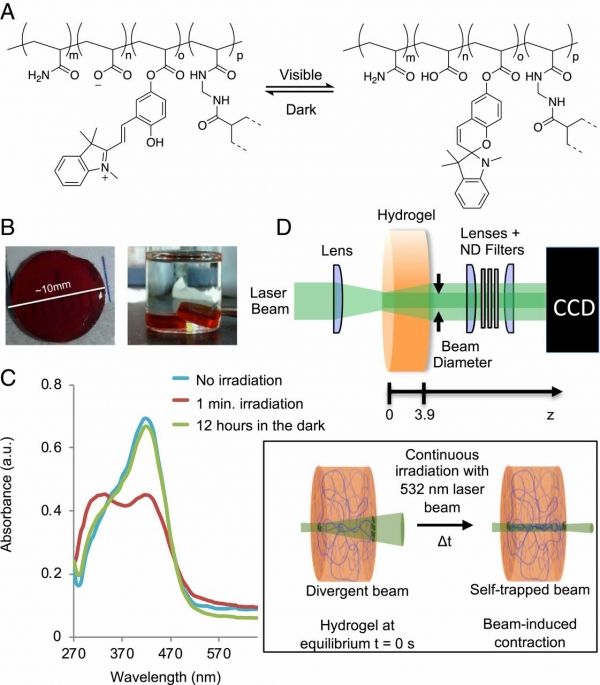Advances in biomimicry – creating biological responses within non-biological substances – will enable synthetic materials to behave in ways that were typically only found in Nature. Light provides an especially effective tool for triggering life-like, dynamic responses within a range of materials. The problem, however, is that the applied light is typically dispersed throughout the sample and thus, it is difficult to localize the bio-inspired behavior to the desired, specific portions of the material.
A convergence of optical, chemical and materials sciences, however, has yielded a novel way to utilize light to control the local dynamic behavior within a material. In a general sense, the illuminated material mimics a vital biological behavior: the ability of the iris and pupil in the eye to dynamically respond to the in-coming light. Furthermore, once the light enters the sample, the material itself modifies the behavior of the light, trapping it within regions of the sample.
The latest research from the University of Pittsburgh’s Swanson School of Engineering, Harvard University and McMaster University, reveals a hydrogel that can respond to optical stimuli and modify the stimuli in response. The group’s findings of this opto-chemo-mechanical transduction were published this month in the Proceedings of the National Academy of Sciences (DOI: 10.1073/pnas.1902872117).
Read more at University Of Pittsburgh
Image: SP-modified hydrogels. (A) Photoisomerization scheme of chromophore substituents from the protonated merocyanine (MCH+, Left) to SP (Right) forms in the methylenebis(acrylamide) cross-linked p(AAm-co-AAc) hydrogel. (B) Photographs of chromophore-containing p(AAm-co-AAc) hydrogel monoliths employed in experiments. (C) UV-visible absorbance spectra demonstrating reversible isomerization of MCH+ (absorption λmax = 420 nm) to SP (λmax = 320 nm) in solution. (D) Experimental setup (Top) to probe laser self-trapping due to photoinduced local contraction of the hydrogel, schematically depicted on the Bottom (see also Movie S1). A laser beam is focused onto the entrance face of the hydrogel while its exit face is imaged onto a CCD camera. CREDIT: Aizenberg/Saravanamuttu Lab. Proceedings of the National Academy of Sciences Feb 2020, 201902872; DOI: 10.1073/pnas.1902872117


